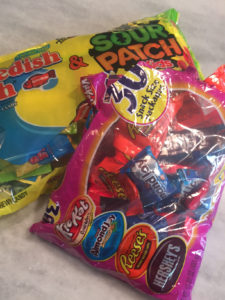By Steve Wickham —
TYRANNY is easy to see, just as much as the broom of advocacy. What we choose to see will grow before our eyes.
Dr Caroline Leaf says, “What we think influences every aspect of who we are and how we feel physically.” Truly, thinking creates destinations of being. Action in faith can challenge and renovate thought.
We come to an awareness of how justice and injustice affect us personally. We can cater for it and counter the negative forces that influence our thinking.
In a recent devotion I ran for eleven- and twelve-year-old primary school students, I commended them to the beatitude: “Blessed are the peacemakers, for they will be called children of God.” (Matthew 5:9 NRSV) Ostensibly Christian, I asked them if they were children of God. “Yes, we are,” they replied. So, I said, does this verse tell us that if we’re children of God that we’re to be peacemakers? I went on to say, people call us children of God when they see us act as peacemakers. That’s the logic of this Jesus beatitude.
If God has called us to peacemaking, he has given us an assignment to see — to see a certain way — to not be bogged down in the refuse of life, but to look up, smile in faith, believe in hope, seek divine direction, recommit wholeheartedly, then move.
God has not simply granted us the option of being lights on a hill. The Lord has called us to watch from that post. From there, to project our light, from whom we are.
In our families, and within our friendship groups, not least with some we associate with, however, we occasionally find hatred stirred up in the lingual presentation of fear. It’s impossible to miss this on social media. It can seem we’re fighting a losing battle in our peacemaking efforts. We can quickly sink into dolour that produces a fighting mindset, and our peace-making becomes peace-breaking.
Let’s consider this word from ancient Isaiah:
“He has made My mouth like a sharp sword,
In the shadow of His hand He has kept Me hidden;
And He has made Me a sharpened arrow,
In His quiver He has hidden Me.”
— Isaiah 49:2 (Amplified)
We’re all full of unrealised potential, which fans the flame of hope within us, if we resist despair. We’re made for now, and yet a time to come. We’re arrows in a quiver, ready for the right time and situation to be pulled and used for the Lord. And yet the Lord has deployed, and is deploying, his arrows. The Kingdom has come and is coming.
God is building a people of power — but not a people powerful in and of themselves. Not a people who use or exploit power, but a people who trust ever so unswervingly in his power — which is peace that reconciles and restores.
Love drives this power and hate cannot stand before it. Love compels victory without fighting. Love has capaciousness and compassion, even for hate, and is destined to win it over to its side. True faith in Jesus, expressed as a hope in the power of love, is enchanting.
In the present, and certainly in and for the future, we’re being built as a people for peacemaking. To bring God’s light and release into dark and oppressive circumstances.
Pray hopefully today, no matter the darkness before the horizon. God is here. The world is unfolding as the Lord wills it.
God needs us peacemakers to take our place.
By Ana Lisa de Jong —
Sad
There is something immensely sad
resounding in the depths,
and carrying on the airwaves.
That is finding a response in us.
The groaning of the earth
is felt by the sensitive.
We don’t know what we are listening for,
but we hear it.
We don’t know what is moving us,
but we register it.
Other’s tears we brush from our own cheeks.
Other’s wounds run fresh with our blood.
We are intrinsically connected.
While the waves jolt us,
and the earth appears even to expel us,
as if we were superfluous,
we are still rocked in unison.
The tide carries us in one direction.
We make landfall on a common shoreline.
One person’s healing becomes another’s hope.
One person’s hope is sowed as a seed
to grow in the heart of the other
until love takes root, and
sprouts as the tree that heals the nations
and the broken earth.
Yes, there is something immensely sad
resounding in the depths,
and carrying on the airwaves.
There is an ache, a worry at the edges of our thoughts,
that we might recognise what it is we fear.
And yet name the shapes we see in the dark.
But for light, we might indeed be lost.
But hand in hand we carry a torch each,
that from our hands will never be knocked.
Not while your tears are brushed
from my wet cheeks,
and my heart healed by your love.
Ana Lisa de Jong
Living Tree Poetry
October 2017
October 31st is not only Halloween, it is also Reformation Day, a day set aside to recognize, remember, and celebrate the Protestant Reformation. It especially remembers Martin Luther and the central role he played in the reform movement that split the western church of Rome.
That is the day in 1517 when Dr. Martin Luther nailed his Ninety-Five Theses to the door of the Castle Church in Wittenberg, Germany. This year we celebrate the 500th anniversary of this momentous event. It was Luther’s act that caused the initial furor that resulted in the Reformation. Luther chose October 31 because it was the day before All Saints’ Day and he knew that on the following day the church would be packed with worshippers, many of them educated and literate.
Luther argued that salvation could not be obtained by purchasing indulgences, through works of charity, by making a pilgrimage, or by performing other acts of piety and devotion. He argued that salvation was an act of God, given by grace through our faith in Jesus Christ. God has already provided for our salvation by the birth, life, death, and resurrection of Jesus; and salvation is ours to accept through faith, not to achieve through works. A second major theme of the Reformation is the priesthood of all believers, meaning that Christians do not need an intermediary between them and God. It was the right and duty of all Christians to enter into their own personal relationship with God, to read the Bible and worship in their own language, and to pray directly to God rather than through another’s efforts.
Let’s Celebrate
Why not use this occasion for a celebration of our Protestant heritage or if you are Catholic, of the transformation that is possible when we allow God to transform our views of life and faith?
Why not have a celebration at church where all get dressed up as characters from the Reformation. Children’s Ministry International has developed a small booklet, Heroes of the Reformation, which will give you some great ideas on who to think of as role models like John Calvin, John Knox and Martin Luther. If you can’t think (or don’t like) these 16th century role models, dress as a Bible character or another well known saint like St Francis or St Clare who challenged the status quo and brought radical transformation to the church.
In this article, Brad Winsted has some great suggestions of things to do to redeem October 31st as a celebration of Reformation Day. For example: consider transforming your fellowship hall or your living room into Wittenburg, Germany or Geneva. Spend time meditating on the great “solas” of the Reformation: by Scripture alone, by grace alone, by Christ alone, by faith alone, and to God be the glory alone. Have people explain them. Draw murals of Reformation events. Show a video of one of the reformers, like this one of Martin Luther.
Plan something fun to go along with it – Brad suggests some wonderful ideas like medieval line dancing (a lot like Scottish line dancing), medieval relay races (put the indulgences in the bottle), bobbing for apples, German cover dish dinner, acting out your character (don’t tell anyone who you are, but act it out — the ideas are limited only by time, imagination and background).
Let’s make October 31 a day of great remembrance (and educational opportunity) of our Reformed heritage.
The festive season is coming fast and many of us are planning for the days ahead. My theme for this year is: Joy to the world. This theme is an extension of my I Choose Joy theme which has guided me throughout most of this year. I talked about it a couple of weeks ago in my post Joy to the World but have been thinking about this ever since I reflected on God so loved the world and my recognition that God’s salvation plan is not for me alone, not for my neighbour but for the entire beautifully crafted world in which we live. As I reflect on the phrase Joy to the world, the same thoughts come to me. The joy of Christmas is not for me alone, not for my church or for neighbours. The joy of Christmas is for God’s entire world. We place animals around the manger scene but we don’t think much about their significance in God’s salvation plan. Maybe the joy of Christ’s birth is meant to extend to them too through our responsible stewardship of God’s creation.
So, over the coming weeks I will ask myself the following questions to try and prepare myself for the broad and rich expanse of God’s joy in the coming of Christ:
How do I choose joy in preparation for Christmas?
How do I tend to my joy?
How do I nourish joy in my relationship with God?
How do I grow joy in God’s created world?
How do I share joy with my neighbors near and far?
How do I celebrate the joy of Christ’s birth?
To make sure this is a relaxed, joy filled, season I have decided to celebrate with a full six weeks of preparation joining the Celtic saints who in the 6th century celebrated Advent during the 40 days before Christmas, as a mirror to the period of Lent before Easter. In this age of blurring of holy-days and consumerism, I like to start Advent earlier, so that Thanksgiving (at least as it is celebrated in the U.S.) is included, but also so there can be a longer, more intentional preparation for Christ’s coming.
What Is Your Response?

I believe in tangible ways to pray. Jesus used things he saw around him to teach his followers and used these every day things to help them see God. So why not Halloween candy as a prayer tool? Since Halloween is upon us and whether or not you choose to embrace Halloween as a holiday or an event, you can still use all that great Halloween candy to help you pray, as a part of your youth group, your family devotion, small group or even in your personal prayer time. And post Halloween is a great time to buy up candy to use for future prayer experiences and ideas. I use sour skittles and m&ms for end of year prayers (future post…thanking God for the sweet and sour for the past year) and tootsie roll pops for advent prayers. Are we willing to wait on God to get to the good stuff of Jesus at Christmas? You can find more in Advent Waiting Prayer Experience at Freerange Worship. Today we are praying with candy, and since chocolate is my love language, lots of chocolate prayers. These are just some ideas. See what they might spark in you and feel free to morph and change them. Note: You can also find a free download of my Halloween Candy Prayers here.
I’d love to hear about how you use these. Have a chocolate today, or another favorite candy and Taste and see that God is good!
HALLOWEEN CANDY PRAYERS:
Have a bowl of mixed halloween candy, at least one piece for each person.
This meditation can be done with a group as a corporate prayer or as an individual prayer station.
Remember that younger students are much more concrete in their thinking and probably works better with high school and beyond, but don’t be afraid to try it with younger students just give them more examples and guidance of what you are going for since they don’t all think in metaphor/comparisons yet. If you are doing this prayer activity with a group, be aware of any nut allergies and have an alternative choice or avoid the nuts completely.
The candy choices will also be determined by where you live. So think about the varieties that can be used for prayer! I was just thinking about how much better the UK Kit Kat bars are than ours here in the States!
Example candy:
Small Hershey bars, kit kat bars, m&ms, mounds, regular skittles, sour skittles, tootsie rolls, tootsie roll pops, mini snickers, mars, etc.
PRAYER 1: Praying with a Piece of Candy
One idea is to have each person in the group choose a piece of candy out of a mixed bowl of candy.
Another way to go is to have everyone have the same type of candy and do a prayer with that particular candy.
Example 1: Praying with Kit Kat Bars.
Pass out a kit kat bar to each person. Hold the kit kat in your hand and consider how you are sharing your life right now. Ask God to show you. Ask “who can you share with or who is God inviting you to share more of yourself with by serving or giving?”
How do you share your gifts with others? With Whom do you need to break off a piece of the kit kat bar and share? How is God inviting you to share your life with other people?
Give participants time to reflect between each question, or have the questions written out and have participants write their responses and then after a given time invite people to share their thoughts with the group.
Example 2: Pick out a piece of Halloween candy.
Consider how your life is going right now, how is your life like that piece of candy?
Consider the flavors, the textures of that piece of candy.
Ask God to show you.
Hershey bar (or plain chocolate bar):
Is life feeling plain not very exciting like a plain Chocolate bar?
Or maybe it’s feeling nutty? Like a bar with almonds or and an almond joy?
Talk to God about this.
Kit Kat:
Are you sharing your life, like your real self, who you are with anyone?
Like sharing a kit kat bar?
With whom would you like to share your life? Your time? How would you like to serve or give to others? Talk to God about this.
Skittles:
Is your life an adventure like different flavors of skittles?
How would you like to add more flavor or more color to your world, to your life?
Talk to God about this. Ask God to begin to show you the adventure ahead of you.
What color or flavor represtents your life right now?
Other: Carmel/Taffy/Tootsie Roll
Is life hard? perhaps life is rather hard to endure like a chewy tootsie roll…or does it have the potential for adventure and unknown like a tootsie roll pop?
What things are you chewing on right now? What questions or problems are you facing? Talk to God about this. Ask God for help.
Maybe life is colorful like a handful of m&m’s with lots of great things going on. Talk to God about this. What are some of the great things that you’ve experienced lately? What are you thankful for? Take some time and thank God for these things.
Snickers ETC.
Some candy combines lots of flavor and textures together. Like Reeses or Snickers.
Consider your week. What things have you experienced? How have you seen God in these things? There are the good things? What are the bad things? What are the plain boring things, and the sweet and sour things that occur all week long? God is present in all of them. Take some time and consider your week. Where did you see God? Talk to God about your life.
Take some time…consider, think about your life.
Where have you seen God at work even in the plain and boring parts.
Even in the sour parts of your life? Thank God for being there in all aspects of your life.
Eat your candy and thank Jesus for all that he is up to in your life and all the wonderful flavors in our world.
Digging Deeper this week: Consider the justice issues around Halloween treats. What about people without candy? Or about the people who produce the chocolate for your favorite treat? Where does the candy come from and who is producing the chocolate? We can all be more aware of areas of pain and suffering caused by the mass production of chocolate and sugar. And we can consider buying fair trade chocolates as a part of our justice practice.
PRAYER 2: Have example candy types/mini candy bars displayed, empty candy wrappers, pieces of chocolate to taste.
Look at and Think about the candy on the table.
Now consider you life with God, your relationship, your journey with Jesus.
Which candy reflects your life with Jesus?
Your life with God…Is it good and rich like your favorite candy bar?
Or maybe your life with GOD is like an empty candy wrapper with nothing inside.
Is it plain and boring like a plain candy bar?
Or maybe it is rich like dark chocolate?
Maybe life is rocky, you know filled with nuts. Or hard to chew because of the nougat and caramel.
Is your life with Jesus tasting sour like sour skittles or sweet like m&ms?
TALK TO GOD about this. Tell God where you are and then tell Jesus where you’d like to be on your journey with Him.
Take a piece of chocolate. You can use chocolate chips rather than small candy bars depending upon the size of your group.
Eat the Candy. TASTE and SEE that the Lord is GOOD.
Jesus longs to be in relationship with you.
You just have to open the door to your life and ask Jesus to come in.
EAT the chocolate as a symbol of your willingness to start a relationship or get back on track in your relationship with Jesus.
PRAYER 3: Box of Chocolates
You will need a Box of chocolates and an empty box. You could show the clip from the movie “Forest Gump.”
In the movie “Forest Gump,” Tom Hank’s character says “life is like a box of chocolates, you never known what you are going to get. “ Consider your life and compare it to a box of chocolates.
Maybe the pieces of candy that you have tried out of the box have been gross, maybe you were expecting a piece filled with rich chocolate and you got a piece of slimy fruit filling instead or you were expecting plain and got nuts instead.
TALK TO GOD ABOUT THE BAD pieces of chocolate, the bad pieces, the negative pieces of your life, both in the past and going on now.
God’s not afraid of your feelings. God wants to hear you. God is listening.
Thank God for both the good things and the yucky things happening in your life right now.
Ask Jesus to show you where he is and what he is up to in your life.
TAKE the TIME TO LISTEN to Jesus.
Maybe you’ve felt like an empty box of chocolates rather than a full box.
Talk to JESUS about this.
Ask Jesus to fill your life with new things and show you what he is up to in weeks ahead.
When you see a candy box, and candy bars in the store, Let them remind you that God is filling your box with GOOD THINGS. Let the Candy box remind you that God is at work in your life. Know that God is working and filling your life with God’s love!
YOU are not empty, you are not a rotten, gross piece of chocolate.
God created you to be God’s favorite.
Part 3 of 3 by Lynne M. Baab —
originally published in Refresh Journal of Contemplative Spirituality, Summer 2015
The first two posts in this series presented five situations in which it can be hard to listen.
- I’ll never show perfect empathy so I don’t want to try.
Communication scholars view empathy as the highest listening skill. Empathy is the cognitive process of identifying with or vicariously experiencing the feelings, thoughts, or attitudes of another. When we empathize, we are attempting to understand and/or experience what another person understands and/or experiences.
Empathy is beautiful to experience. It is also very hard to sustain. In fact, no one can empathise perfectly. Sometimes we are tempted not to try because it is so challenging.
Perhaps you’ll find it encouraging to know that the people in my life who are the very best listeners have expressed to me how often they feel they fail as listeners. They are very aware that their empathy is only partial and that sometimes they simply talk too much or fail to perceive what another person is trying to say.
But they keep trying. They constantly work at listening better. They intentionally give feedback through their facial expression, body language and short words. They try to ask good questions. They pay attention to what the other person is saying and try to reflect back in order to be sure they have comprehended what was said. And they work at paying attention to those times that they are tempted to talk and talk. They know that the urge to fill the air with their own words comes from some kind of inner anxiety that must be acknowledged before it can be set aside.
An example
I interviewed the minister of a culturally diverse congregation in Auckland. He said that some of the European members of his congregation have expressed their uneasiness in conversations with Asians in the congregation. He has asked them, “What’s the issue?”
One woman responded, “Well, if I talk to an Asian I don’t know what to say. If I talk to a European, I might be able to say, ‘Oh, you went to school in Wellington!’ I can kind of imagine that because it would be like me going to school in Auckland. But if you said you went to school in Kuala Lumpur – blank.”
The minister said he found himself thinking, “You’re an intelligent person, so why don’t you just ask the next question: ‘What was it like going to school in Kuala Lumpur?’”
To “neighbor” the people God has put in our lives who come from very different backgrounds than we do, or who believe very different things than we do, requires using a variety of listening skills. One of those skills is asking simple and appropriate questions like, “What was it like going to school in Kuala Lumpur?” Asking good questions and being willing to listen to the answer requires something else first: we must stop talking. Many people talk rather than listen because it’s easier for so many reasons. Exploring those reasons and learning to set them aside from time to time helps us show love to the people God is bringing to us as neighbors.
Watch for the ways you feel loved in conversations. Watch for the way people in your life “neighbor” you as they listen to you. Then go and do likewise. You’ll learn so much from people who are different than you are, and you’ll enter into Jesus’ love for you and for the people around you.
[1] Kathleen S. Verderber and Rudolph F. Verderber, Inter-Act: Interpersonal Communication Concepts, Skills and Contexts, 10th ed. (New York: Oxford University Press, 2004), 211.
By John Birch —
So fill us with your love
that it might cascade
into the ordinariness
of our working lives,
and others experience
the warmth of its flow,
spreading from hearts
and words and deeds;
an unbroken stream
bringing refreshment
to all that it touches.
As an Amazon Associate, I receive a small amount for purchases made through appropriate links.
Thank you for supporting Godspace in this way.
When referencing or quoting Godspace Light, please be sure to include the Author (Christine Sine unless otherwise noted), the Title of the article or resource, the Source link where appropriate, and ©Godspacelight.com. Thank you!






